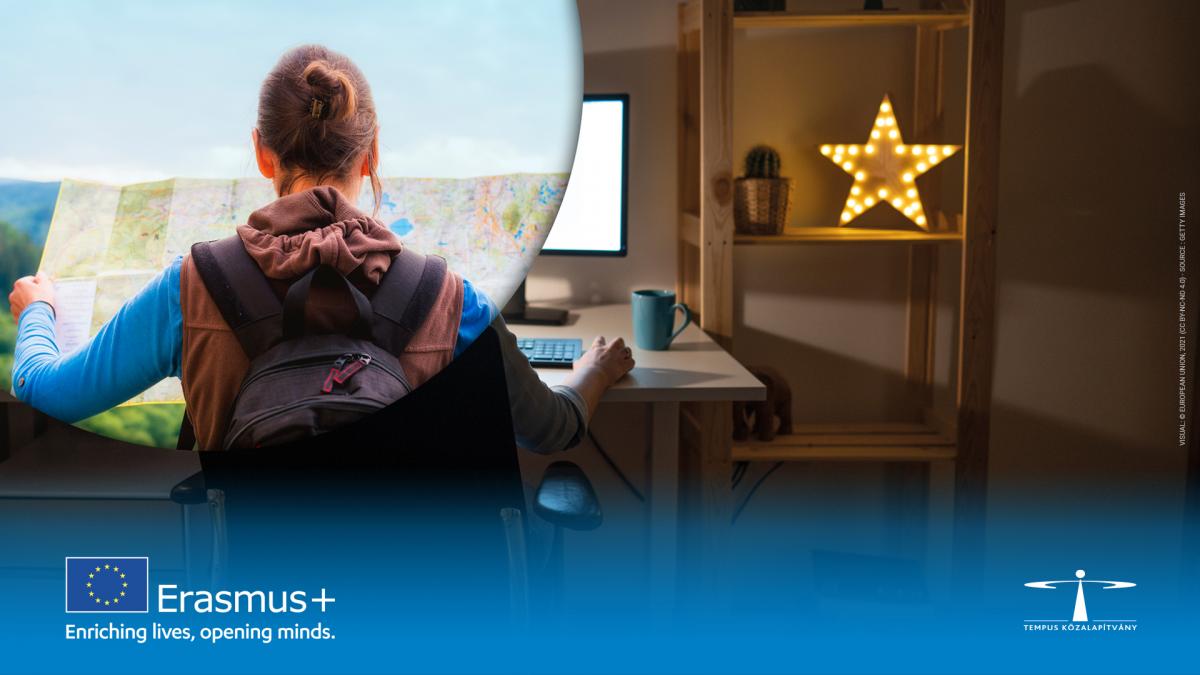News feed
“The Erasmus+ programme gave me valuable professional experiences”
2022. 04. 05.Participants on short study trips abroad can gain practical knowledge and new professional contacts to support their research.
“I had the opportunity to experience and see first-hand the rich French architectural history and technology heritage, which has been the focus of my postdoctoral research”, said Krisztina Fehér, assistant professor of the Department of History of Architecture and Monument Preservation at BME’s Faculty of Architecture, who spent two months at the Center for Medieval Studies (Centre d'Études Médiévales) of Paul-Valéry University of Montpellier (Université Paul Valéry - Montpellier 3) within the Erasmus+ Staff Mobility for Training programme. The young researcher was also awarded an Intergovernmental Postdoctoral Research Fellowship by the French Government, which allowed her to extend her study trip to Western Europe for another month. She talked to bme.hu about the valuable experiences that will shape her future research.
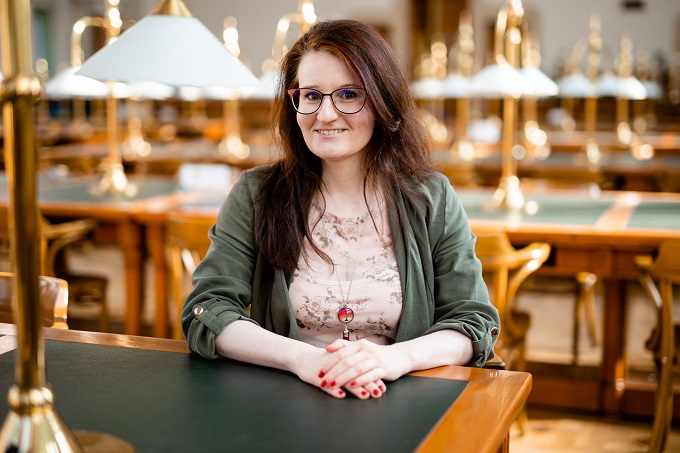
|
One of the European Commission's most successful initiatives, the Erasmus programme, launched in 1987, is a mobility scheme for students, teachers and non-teaching staff from the European Higher Education Area to partner institutions in other countries, which has already helped more than 10 million university students to move around Europe. Under the programme, mobility trips and the exchange of good practices are organised based on agreements between universities and higher education institutions. Mobility is an opportunity for innovative education systems to adapt to new forms of teaching and learning. Education, training and non-formal learning are important factors in creating jobs and increasing Europe's competitiveness. The new 2021-27 programme period will allow mobility to institutions outside Europe, opening up the world even more to those interested. Participants can improve their language skills, build professional relationships and learn about other cultures.
The programme is coordinated by the Erasmus Office, of BME’s Department of International Relations (BME NKI), and at national level by the Tempus Public Foundation as the national office.
Within the framework of learning mobility (part-time studies), students can spend one or two terms at one of BME’s partner institutions and have the credits they earn there credited towards their studies at home. Under the exchange programme, students can study at the host institution without having to pay tuition fees, and also receive a grant to cover travel, accommodation and living expenses. The traineeship provides the opportunity to carry out additional professional activities, related to the academic programme, for a minimum of 2 months and can also be credited towards studies at home. The student is free to choose the host institution. One of the aims of the teaching mobility programme is to make the knowledge and experience of lecturers from another European university available to students who are unable to participate in student mobility; to exchange and broaden expertise and experience; and to enrich the range and content of training programmes. Staff mobility for training helps teachers, administrative and other non-teaching staff to gain experience, transfer knowledge or develop skills by visiting a foreign partner. Candidates will have the opportunity to participate in language and other professional training courses, conduct research, gain an insight into the work of colleagues employed in similar jobs in the partner institution, learn good practices and implement them after returning home.
The application process To help as many students and colleagues as possible to benefit from the advantages of an experience abroad, the Erasmus Office offers continuous opportunities for traineeship, teaching mobility and staff mobility for training. The 2020-22 period, which exceptionally covered three terms due to the limited travel opportunities caused by the coronavirus, saw 469 mobility placements. The most popular mobility scheme was the learning mobility involving 387 students, followed by traineeships with 70 students and lastly teaching and training mobility with 12 participants. For incoming students, Budapest University of Technology and Economics continues to be a popular destination for part-time studies - 340 students arrived for the autumn term under the Erasmus programme. BME’s Department of International Relations considers it an important mission to contribute to the expansion of the students’ and staff’s professional experiences, the establishment of international partnerships and the development of new joint training programmes through the implementation of the Erasmus programme, thus strengthening BME’s international reputation in order to attain and maintain its prestigious positioning in world and regional rankings. For more information about the various mobility programmes visit the website of BME’s Department of International Relations, at the following link. |
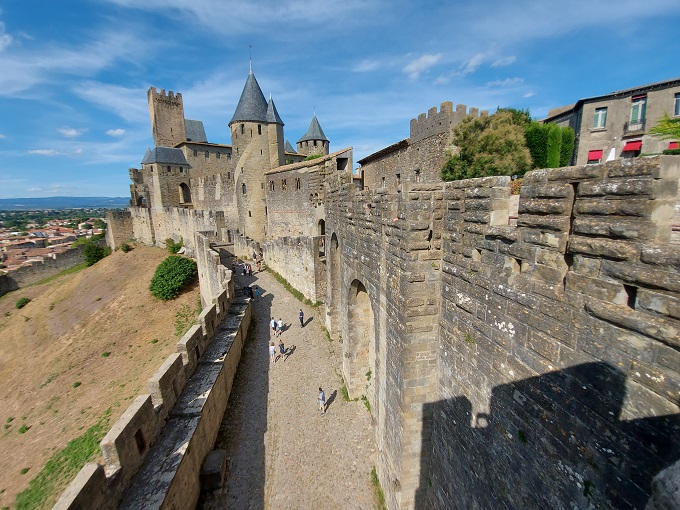
The wall of the castle of Carcassonne, restored by Viollet-le-Duc in the 19th century, one of the most famous monuments of the Occitanie region, a UNESCO World Heritage Site since 1997
Krisztina Fehér took part in an EU initiative in which teaching and non-teaching staff from BME can participate in teaching, research and training activities during a short study visit to a partner institution abroad. “I have had study trips of varying duration to France before, but this programme has opened up a wide range of professional experiences and opportunities for me,” said the researcher, who specialises in medieval construction technology, design and heritage protection, and who has approached these topics in the context of the French examples during her recent trip.
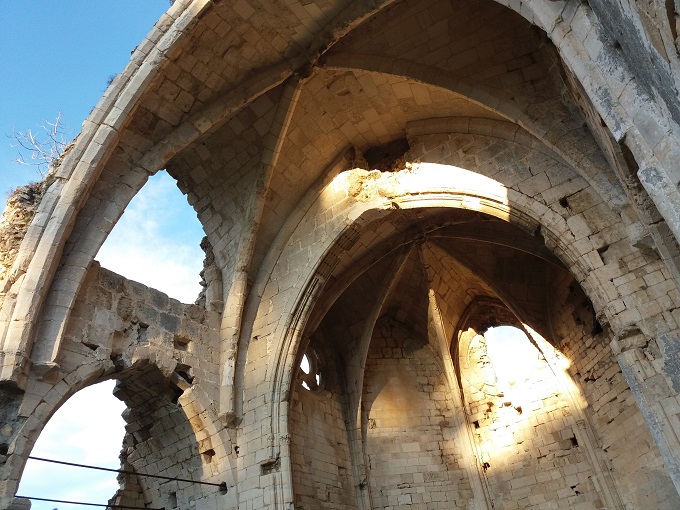
The fascinating vaults of the ruins of the Notre-Dame-des-Oubiels church (Portel-des-Corbières), South of France
During the three months spent in France, she visited over 100 medieval buildings in the host institution's region of Occitanie. “The site visits gave me a comprehensive picture of the architectural history of the area’s medieval buildings. I was mainly interested in technical issues, including the construction technology of vaults, which I had already studied during my doctoral research. Originally I focused my scientific research on a famous Hungarian building, the medieval church of Zsámbék, and now I was able to compare this knowledge with the experience gained during the study trip to the South of France”, Krisztina Fehér stressed, adding that she was able to follow the practical implementation of French heritage conservation strategies during her site visits. “How to preserve these priceless, irreplaceable historic buildings in a professional way is a very important issue. During the trip, I was able to witness the latest international results in the practical implementation of the professional management and care of the built heritage, which I can use not only as a researcher, but also as a lecturer at BME.”
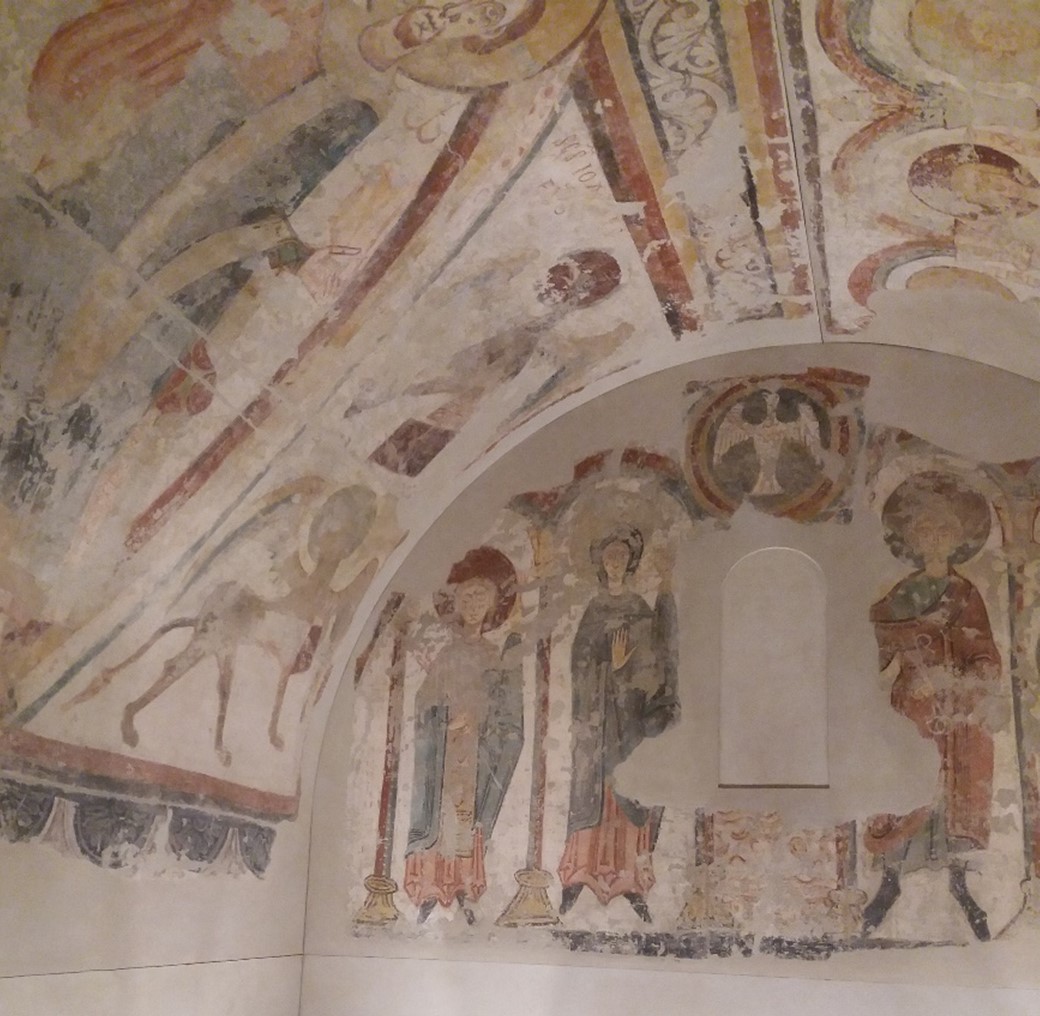
Saving medieval frescoes from decay. The wall paintings of the church of Santa Coloma (Andorra) are now protected in the purpose-built exhibition area (Espai Columba)
During her study trip, she also visited the monuments of Andorra, in addition to the South of France. One of the most significant professional experiences was to see the actual conservation work carried out by professionals to preserve and display the Romanesque wall paintings of the Santa Coloma church. To avoid further deterioration, the frescoes of the 11th-century church have been removed using the Italian strappo technique. Without this intervention, the unique frescoes would have been destroyed. The original wall paintings are now kept and displayed to the public in a purpose-built contemporary museum building (Espai Columba), where the apse of the medieval church has been mapped. After visiting the museum, you can also see the medieval church with a guided tour. The images of the frescoes are projected onto the original walls by video-mapping, which recreates the authentic character of the medieval church interior and the vividness of the colours without damaging the original structure.
During her visit to France, Krisztina saw that in this region research in her particular field of expertise (theoretical studies, archaeological excavations, building surveys, building research, building archaeology, etc.) and in heritage conservation interventions received considerable financial support. “The knowledge, recognition and preservation of historical values are not only social needs, but also significant drivers of domestic and foreign tourism”, Krisztina Fehér emphasised, describing that in most of the sites she went to, visitors were welcome with plenty of clearly understandable information about the ongoing or planned interventions. In addition to the information published here, the historical and cultural background of the monuments has been presented using various digital, virtual tools (such as smartphone apps, interactive videos, projections, VR and 3D models, guided tours with tablets), thus enhancing the visitor experience. “3D graphics and various digital solutions are commonplace in historical and building research, as well as in museological solutions for site visits. In addition to the technological potential of digitalisation, urban developments are also consciously prepared along comprehensive strategies planned several years in advance”, the lecturer-researcher of the Faculty of Architecture explained in more detail.
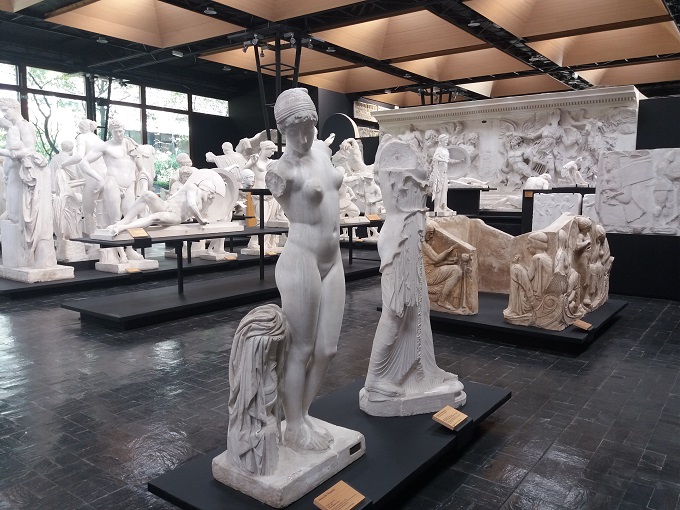
The Museum of Mouldings of Paul-Valéry University of Montpellier (Musée des Moulages, Université Paul Valéry Montpellier 3), is not only a tourist venue, but also serves as an educational tool for students studying restoration, art history and history.
Krisztina also had the opportunity to see how Paul-Valéry University and the heritage organisations in the region operate. At the Montpellier host institute, twenty five lecturer-researchers are involved in the theoretical and practical research of medieval buildings in the south of France. With the support of her colleagues, Krisztina was able to view the finest pieces of the University's archives (e.g. plaster collection, document archives, artifacts) and was introduced to the methods for the management and sustainable preservation of these collections. “The practical experiences gained here are also valuable because we have a large collection of drawings, photographs and slides at the Department of History of Architecture and Monument Preservation,” the grant-awardee emphasised. During her months abroad, she also found time to conduct bibliographical research and collect materials, which involved studying large French library collections.

The view of Saint Martin de Canigou in the mountains, one of the oldest monasteries in the Eastern Pyrenees still in operation
One of the most beautiful and memorable experiences of her study trip was visiting the 10th-11th century monastery of Saint Michel de Cuxa in the Pyrenees, a unique example of early Romanesque sacral architecture with a unique spatial structure. “I have been very interested in this complex for a long time. Every year, it hosts one of the most important conferences in France on medieval studies, and I have used its scientific publications extensively in my doctoral research.”
Besides enriching her knowledge, Krisztina Fehér also promoted BME, the professional work carried out here and the unique architectural values of the BME campus, relating to her field of expertise, to her French colleagues: she gave a presentation on the research and teaching of architectural history and heritage conservation at BME, which attracted the interest of the director of the research centre, Professor Thomas Granier, and fellow researcher Professor Geraldine Mallet, who were fascinated by the beauty of the BME campus.
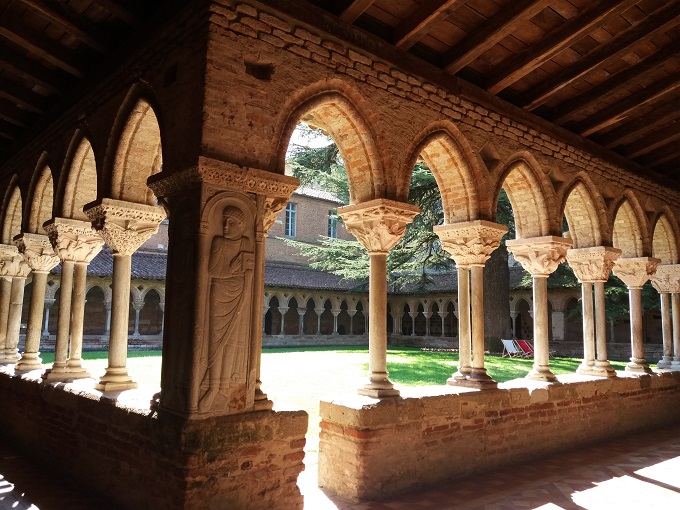
The cloister of the Benedictine monastery of Moissac, with its unique Romanesque carvings and buildings, a UNESCO World Heritage Site as part of the pilgrimage route of Santiago de Compostela.
“Gaining international experiences, knowledge transfer and networking are further benefits of the programme. The close partnerships established in the past, including those through the Erasmus+ mobility scheme, have led to a number of programmes in the department with the involvement and participation of students. For example, the three heritage conservation workshops for architecture students in l'Isle-sur-la-Sorgue, France, the conference and roundtable discussion on built heritage and sustainability (Gestion Durable du Patrimoine Bâti) organised jointly with the French Institute of Budapest, several thematic TDK sessions and the publication of a thesis topic”, Krisztina Fehér explained. We also asked her about how she got on in a foreign country and in a different culture.
“This study tour also had its challenges. Beyond the day-to-day challenges, I also had to cope professionally while using a foreign language, in a highly prestigious environment, where I represented my department, our faculty and the university as a whole. These situations are sometimes difficult and challenging, but at the same time very inspiring,” Krisztina added. She drove her own car to the study trip in France, which allowed her to travel more freely in the region and to visit more monuments in person.
The time spent abroad was very useful for her and the experience at the French partner institution, in her opinion, goes well beyond the duration of the trip. “I am confident that these professional relationships can lead to fruitful joint research projects. Also, there are programmes that have already been implemented (e.g. summer survey camps, workshops, conferences, TDK projects), where we can involve students and provide inspiration and a new perspective for young people’s studies, and even motivate them to do doctoral research.”
TZS-HA
Photo: B. Geberle and Krisztina Fehér

